29th Annual Harvard India Poetry Meeting and 17th Anniversary Meeting of SAPNE
WHEN
Sun, May 18, 2025 at 02:00pm, ET
VENUE
Tsai Auditorium S010, CGIS South

WHEN
Sun, May 18, 2025 at 02:00pm, ET
VENUE
Tsai Auditorium S010, CGIS South

WHEN
Fri, May 9, 2025 at 04:30pm, ET — Sat, May 10, 2025 at 03:00pm, ET
VENUE
Main Theater, Hopkins Bloomberg Center
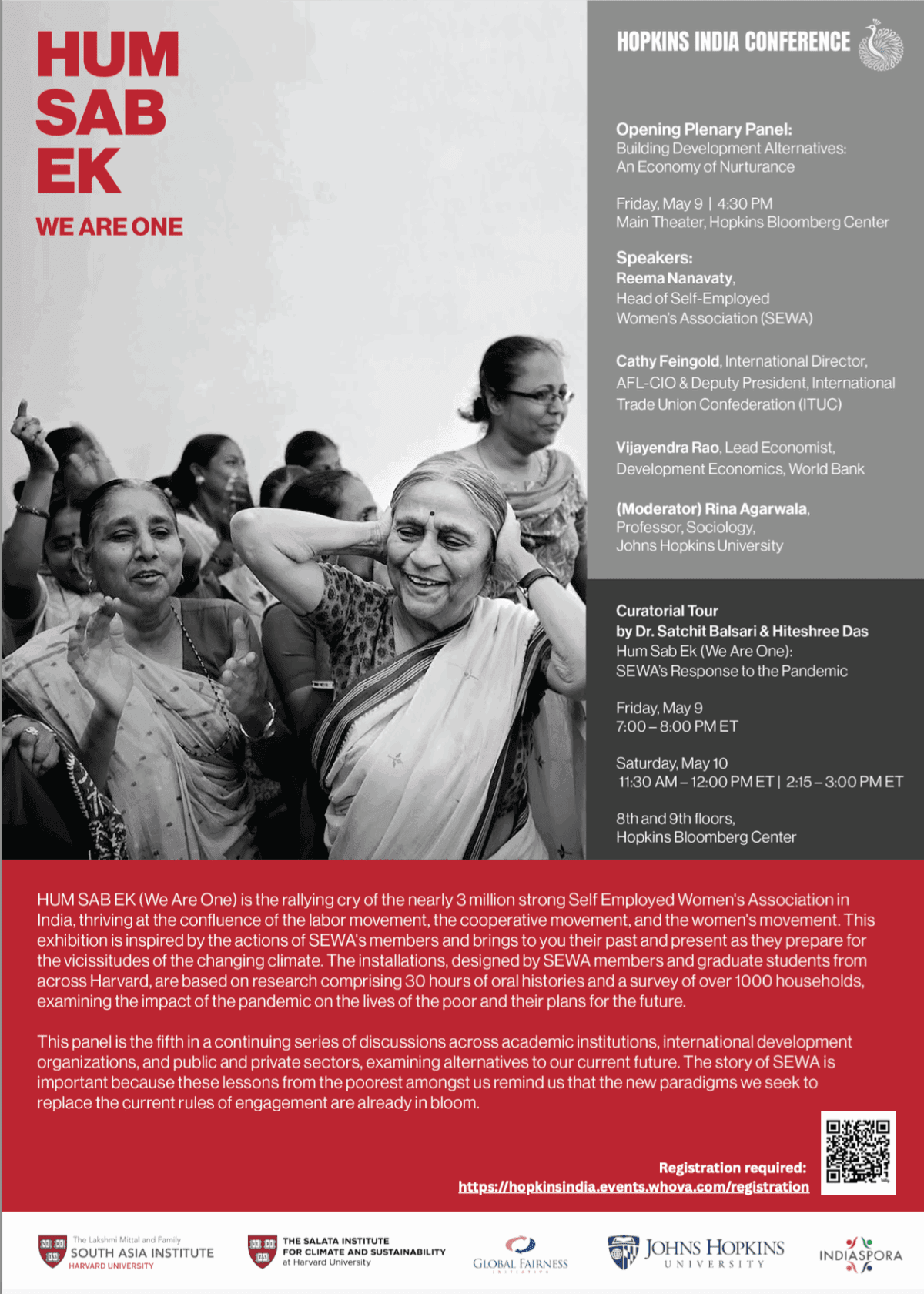
HUM SAB EK (We Are One) will stop in Washington, DC, for a panel and curatorial tours. It will be the fifth in a continuing series of discussions across academic institutions, international development organizations, and public and private sectors, examining alternatives to our current future.
More InfoWHEN
Mon, Apr 14, 2025 from 05:30pm — 07:00pm, ET
VENUE
Cambridge – CGIS South, Tsai Auditorium
ORGANIZER
Mittal Institute Cambridge Office
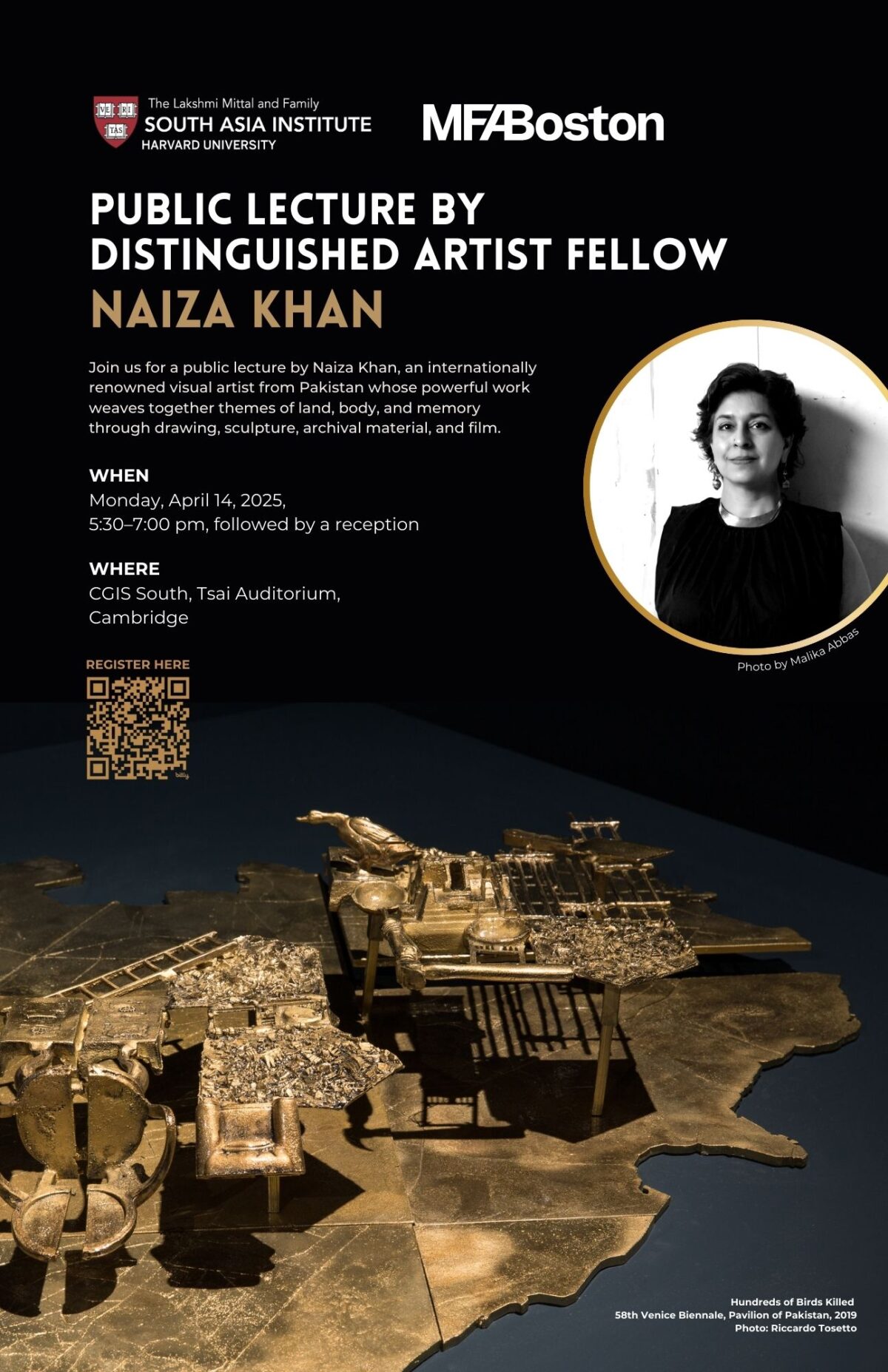
Please join us for a public lecture by the Mittal Institute’s second Distinguished Artist Fellow, Naiza Khan, a highly acclaimed visual artist from Pakistan.
More InfoWHEN
Tue, Apr 1, 2025 from 05:30pm — 06:45pm, ET
VENUE
Cambridge – CGIS South, Belfer S020
ORGANIZER
Mittal Institute Cambridge Office
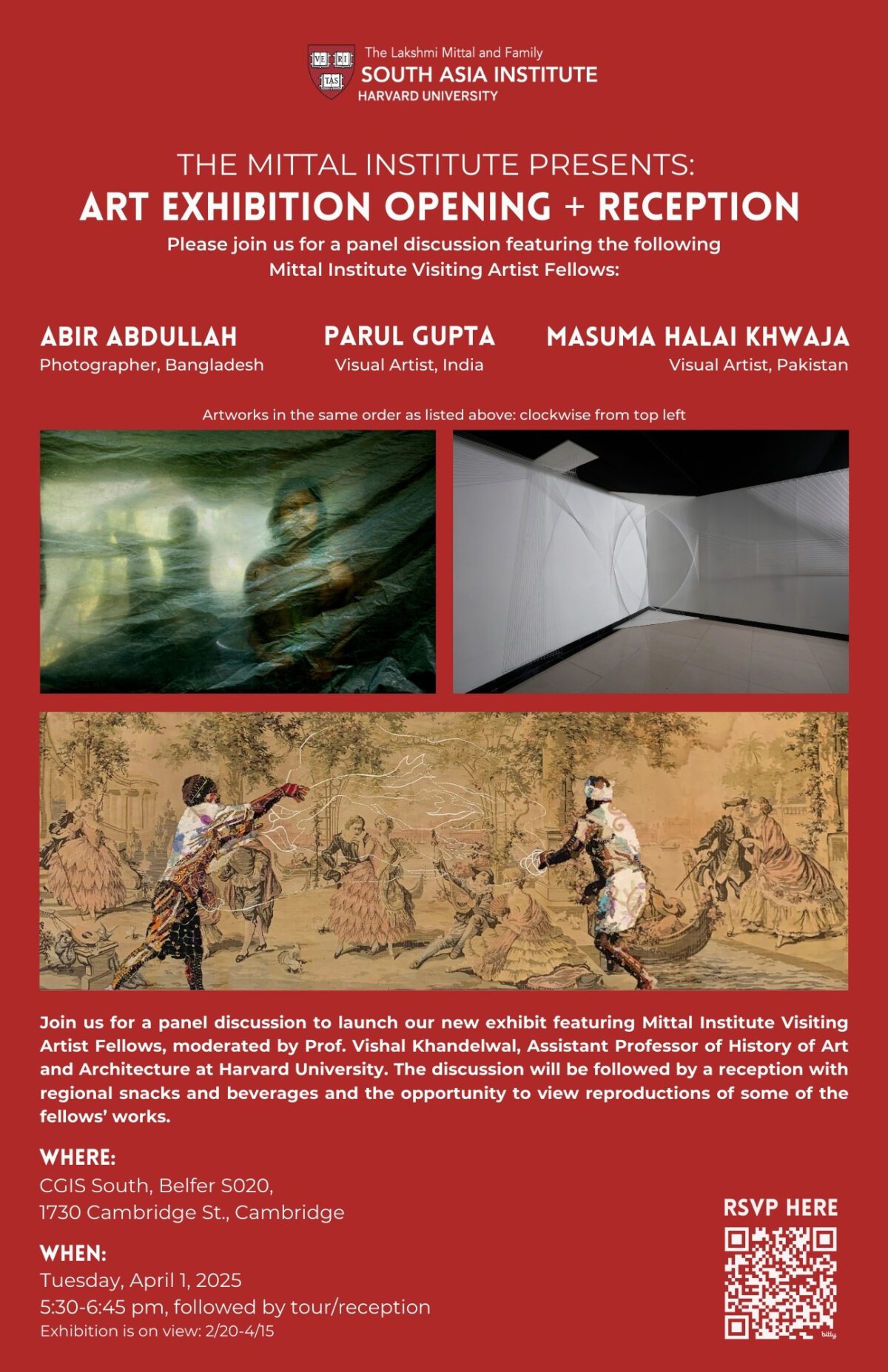
Please join us for a panel discussion to launch our new exhibit featuring Mittal Institute Visiting Artist Fellows Parul Gupta, Masuma Halai Khwaja, and Abir Abdullah, moderated by Prof. Vishal Khandelwal, Assistant Professor of History of Art and Architecture at Harvard University.
More InfoWHEN
Thu, Feb 27, 2025 from 05:30pm — 07:00pm, ET
VENUE
Cambridge – CGIS South, Belfer S020
ORGANIZER
Mittal Institute Cambridge Office
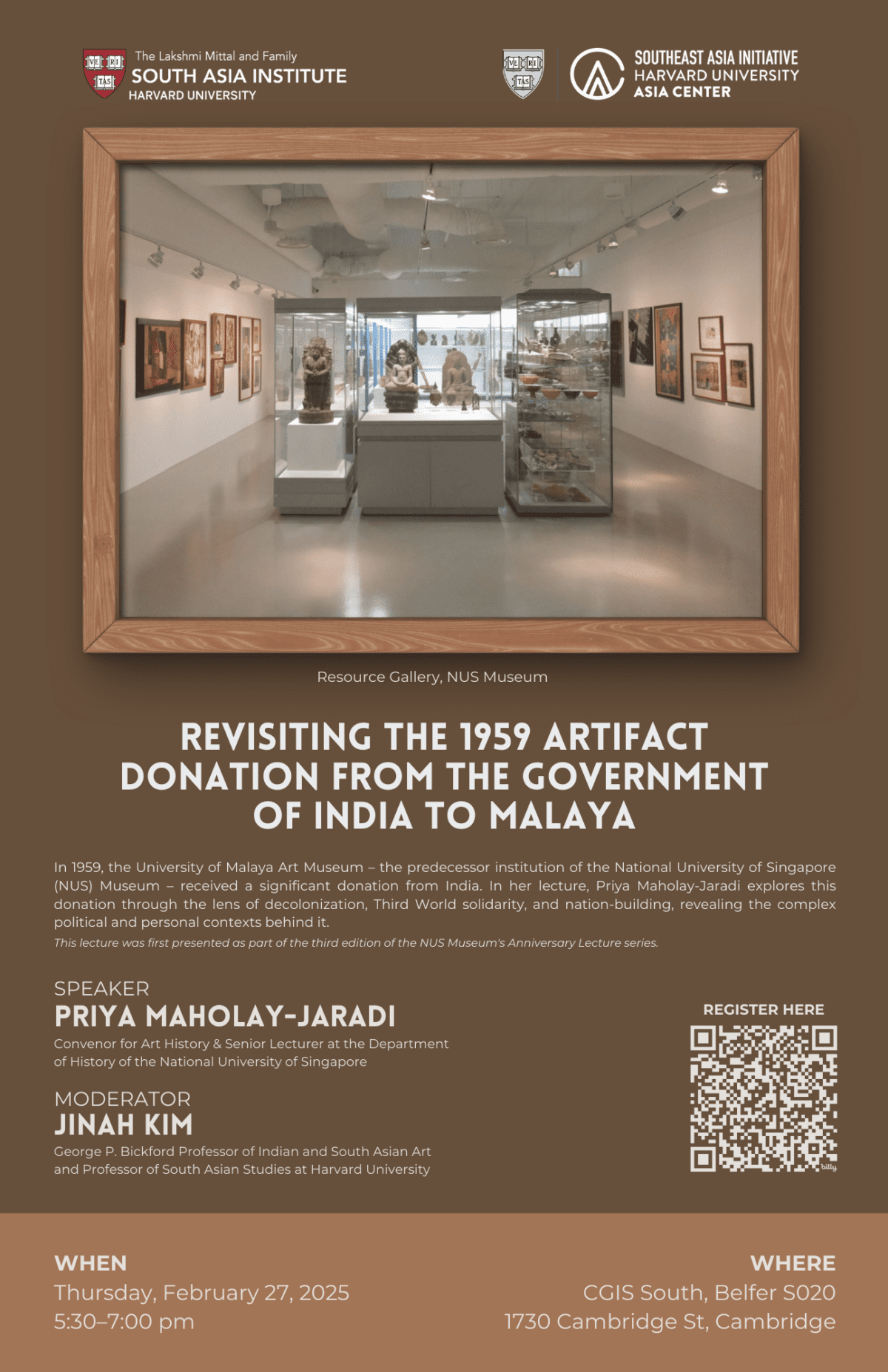
Drawing on her recent publication, Priya Maholay-Jaradi will read the 1959 artifact donation from the government of India to Malaya beyond its apparent geo-political and diplomatic connotations, i.e., the culturally hegemonic proposition of the Indianization of Southeast Asia, and India’s diplomatic gesture in a new regional order.
More InfoWHEN
Tue, Feb 11, 2025 from 05:30pm — 07:00pm, ET
VENUE
Cambridge – CGIS South, S153
ORGANIZER
Mittal Institute Cambridge Office
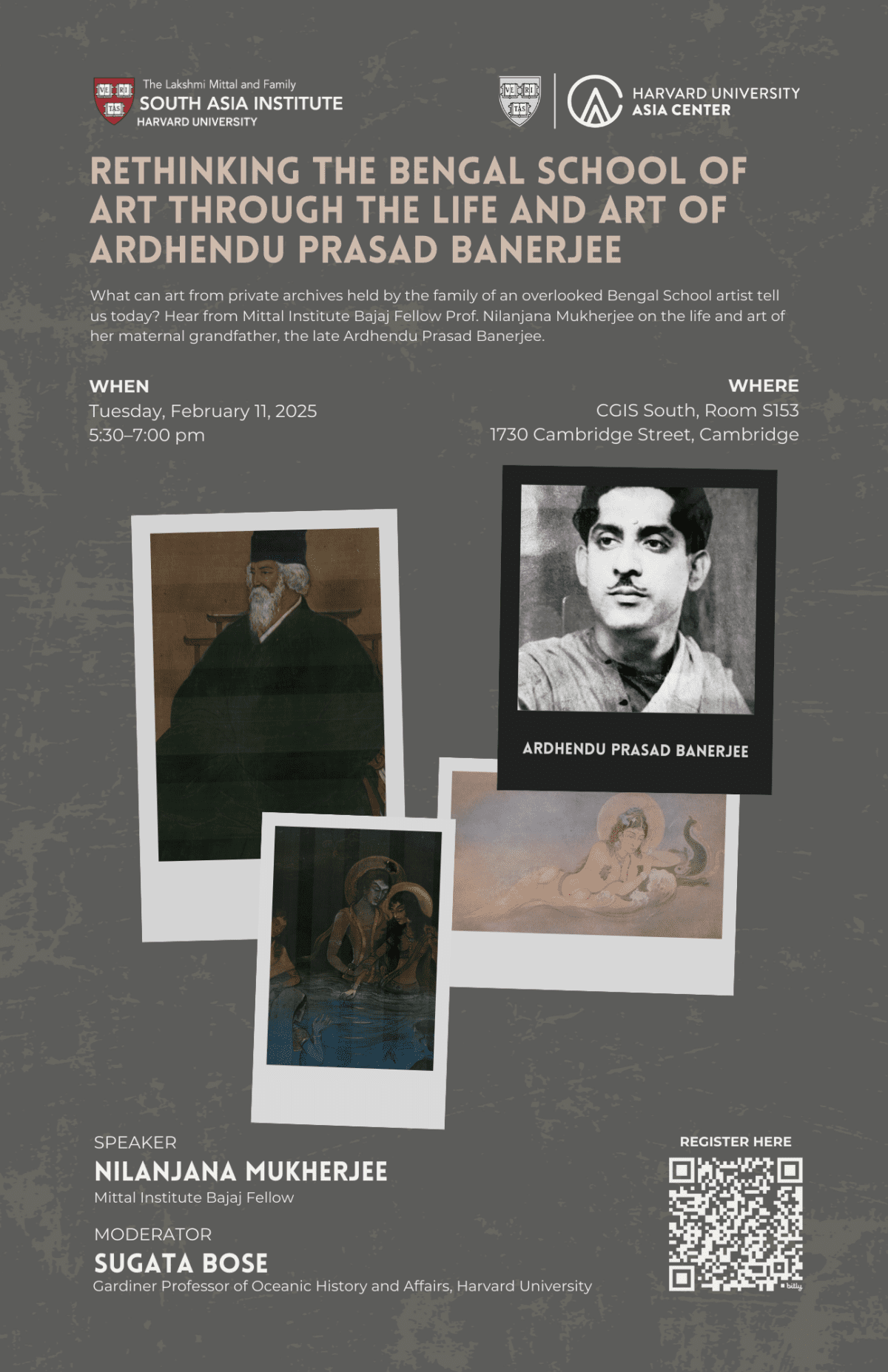
What can art from private archives held by the family of an overlooked Bengal School artist tell us today? Hear from Mittal Institute Bajaj Fellow Prof. Nilanjana Mukherjee on the life and art of her maternal grandfather, the late Ardhendu Prasad Banerjee.
More InfoWHEN
Wed, Jan 8, 2025 at 09:00am, ET
VENUE
The World Bank Headquarters, Glass Gallery, 1818 H Street, N.W., Mail Stop MC 13-1302, Washington, DC
ORGANIZER
Mittal Institute Cambridge Office
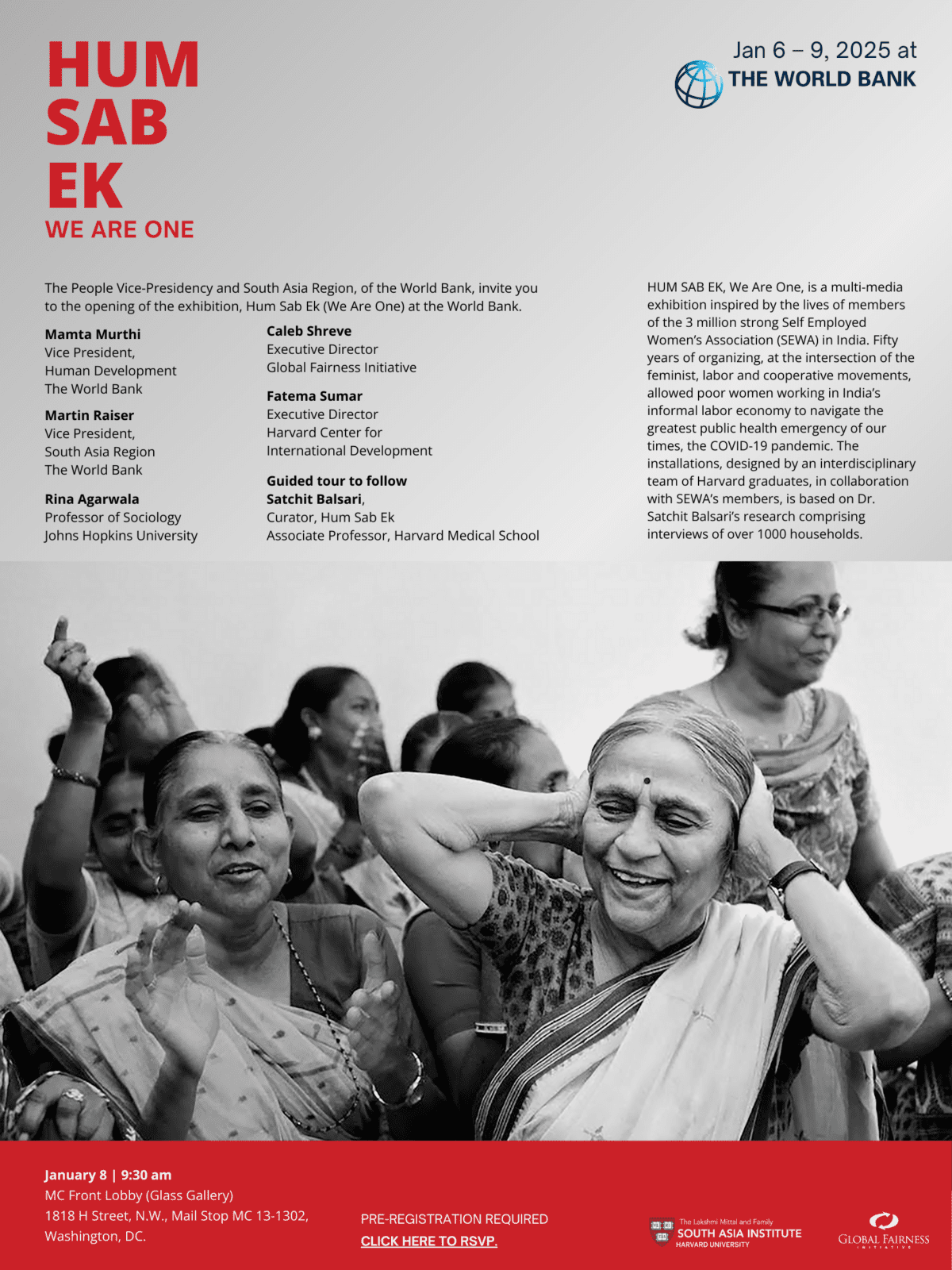
The traveling exhibition, HUM SAB EK (We Are One), co-sponsored by the Mittal Institute, stops at The World Bank in Washington, DC, from January 6–9, 2025. On January 8 at 9:30 am, please join us for an opening panel discussion and guided tour. RSVP is required.
More InfoWHEN
Mon, Dec 16, 2024 from 06:00pm — 07:30pm, IST
VENUE
India International Center, New Delhi
ORGANIZER
Mittal Institute India Office
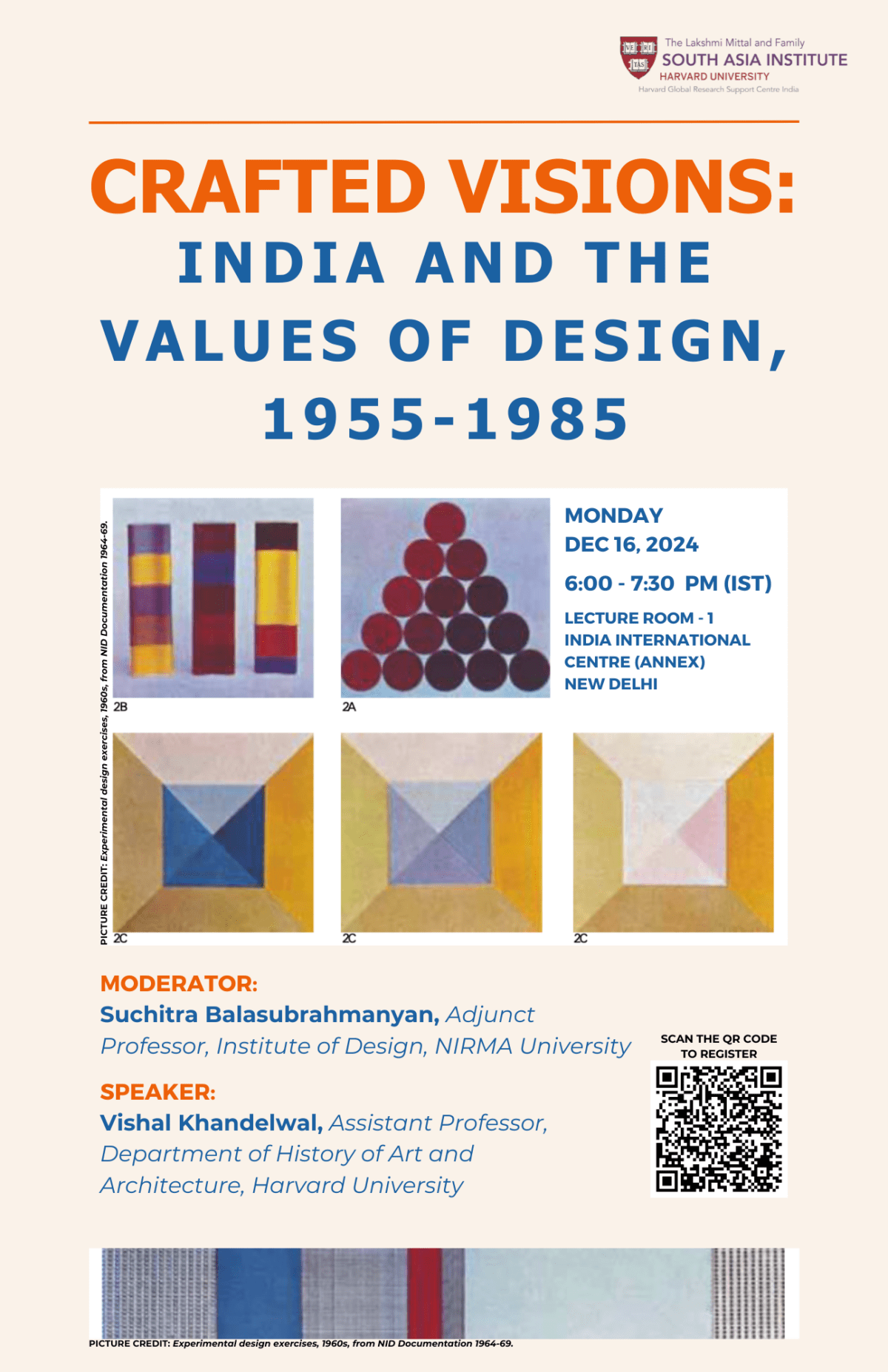
Join us for a presentation by Professor Vishal Khandelwal on his current book manuscript, titled “Crafted Visions: India and the Values of Design, 1955-1985.”
More InfoWHEN
Wed, Dec 11, 2024 - Fri, Dec 13, 2024, ET
VENUE
Online on Zoom
ORGANIZER
Mittal Institute India Office
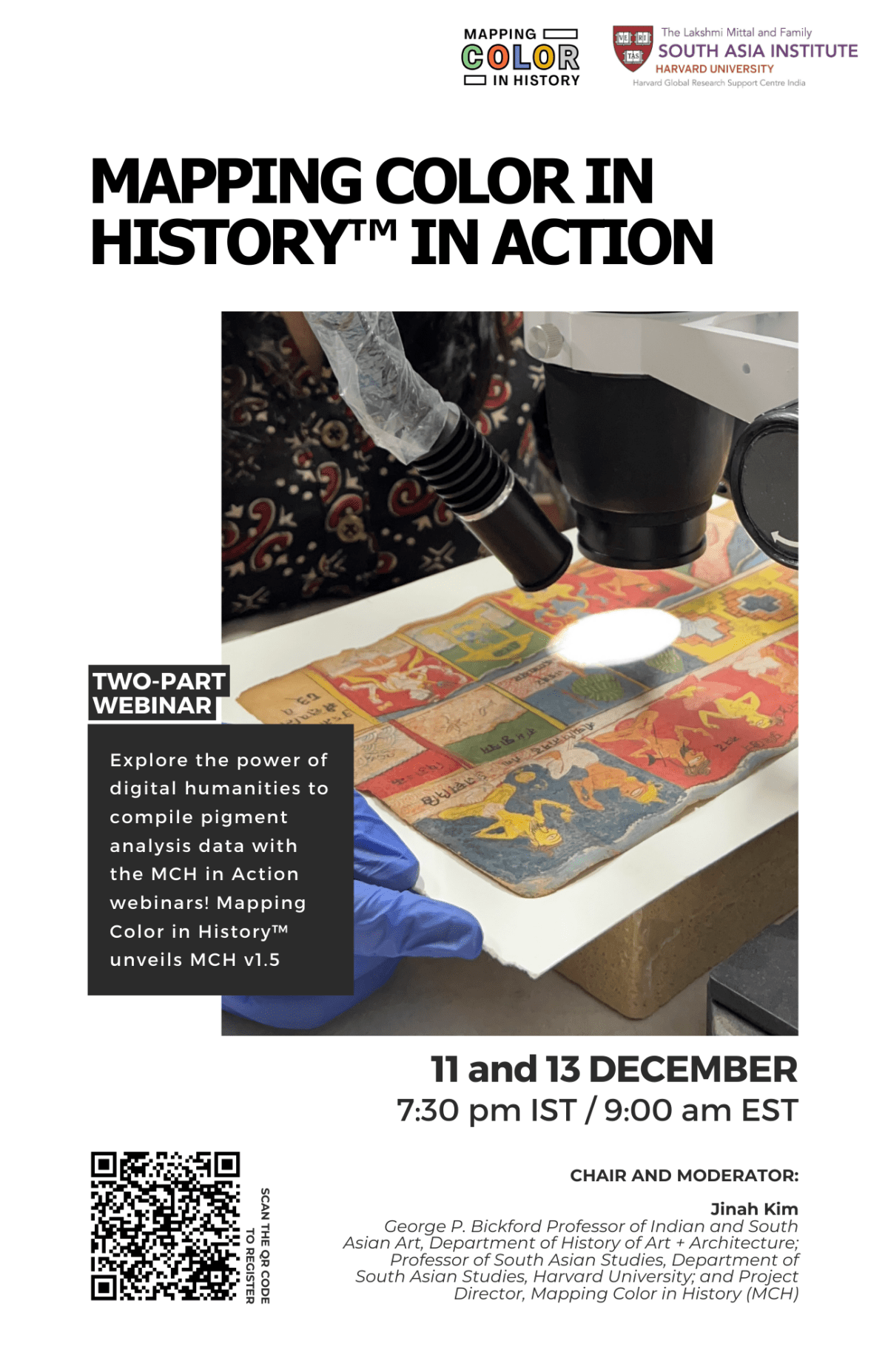
Join us for the “MCH in Action” webinars where the project team and research partners discuss the MCH’s scope, goals, and current research findings.
More InfoWHEN
Tue, Dec 10, 2024 at 09:00am, ET
VENUE
Online
ORGANIZER
Mittal Institute Cambridge Office
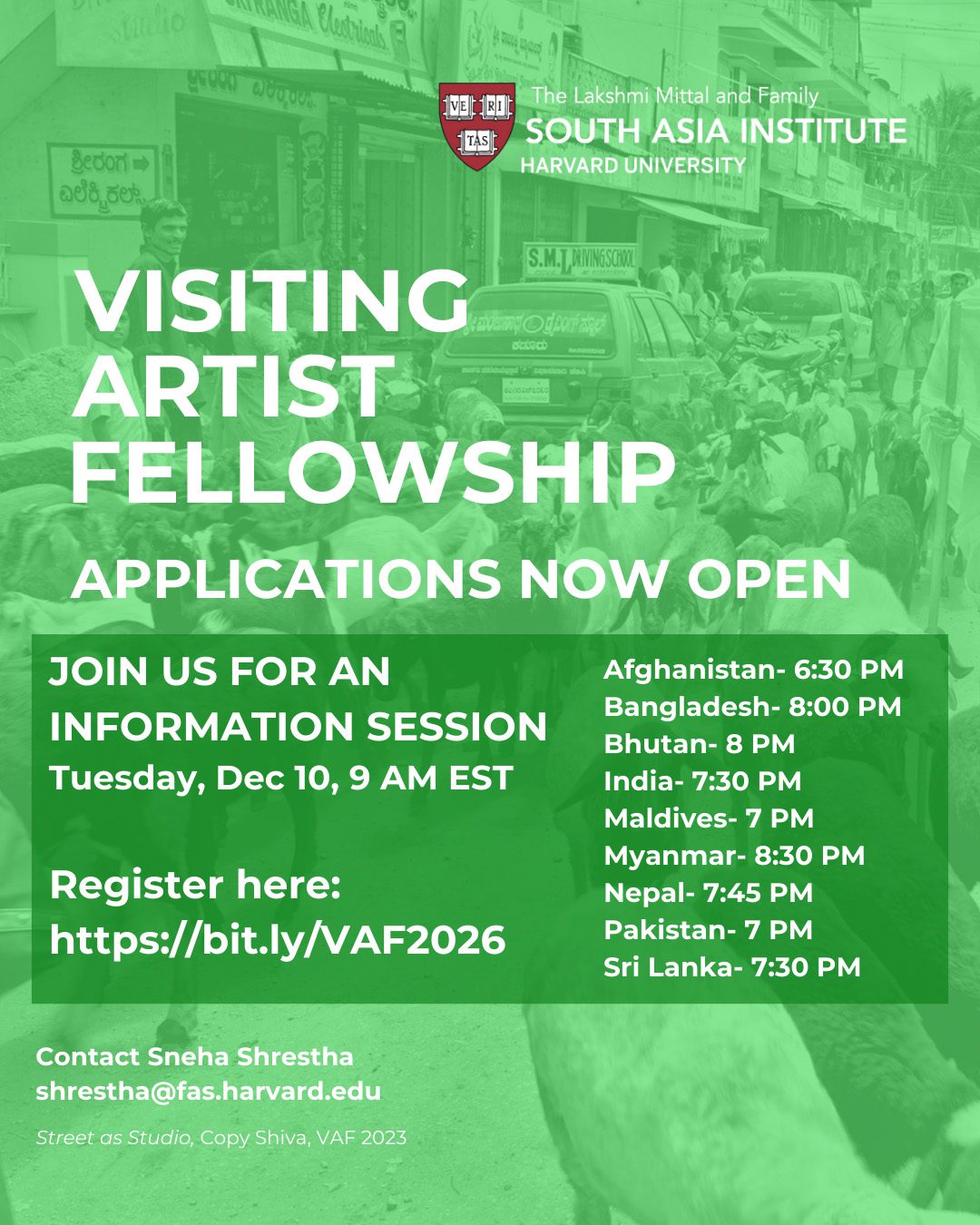
Are you interested in the Mittal Institute’s Visiting Artist Fellowship? Join us for an info session with Sneha Shrestha, Arts Program Manager, to learn more about the opportunity and ask questions.
More InfoWHEN
Wed, Nov 20, 2024 from 12:20pm — 01:20pm, ET
VENUE
Hybrid – Harvard Law School, Wasserstein Hall, Room 2012, and online via Zoom
ORGANIZER
Mittal Institute Cambridge Office
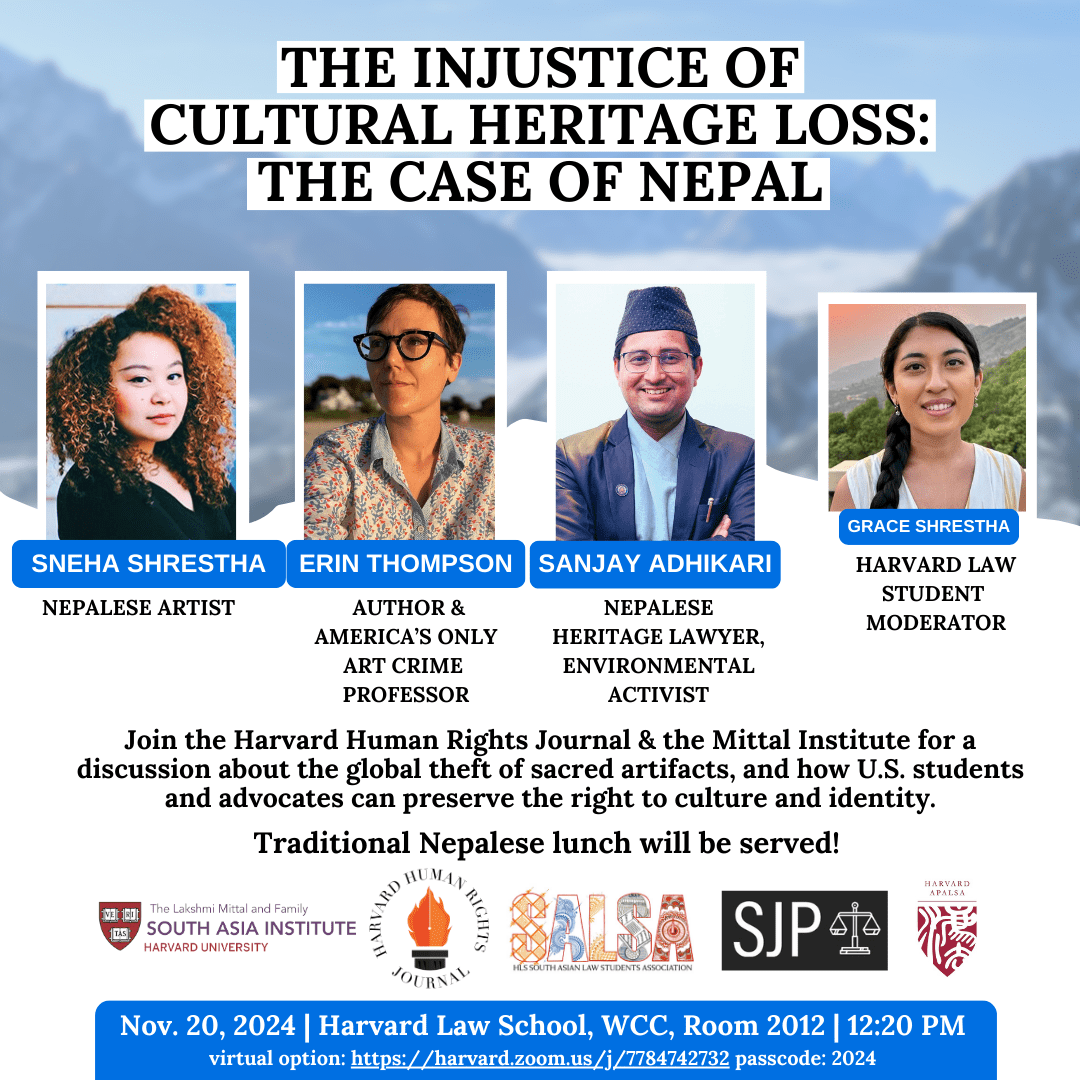
Join the Harvard Human Rights Journal and the Mittal Institute for a discussion about the theft, trafficking, and trade of precious artifacts from Nepal and countries around the world, and the ways in which students and advocates in the United States can advance the right to culture, identity, and property.
More InfoWHEN
Tue, Oct 22, 2024 from 06:00pm — 07:30pm, ET
VENUE
Cambridge – CGIS South, Room S250
ORGANIZER
Mittal Institute Cambridge Office
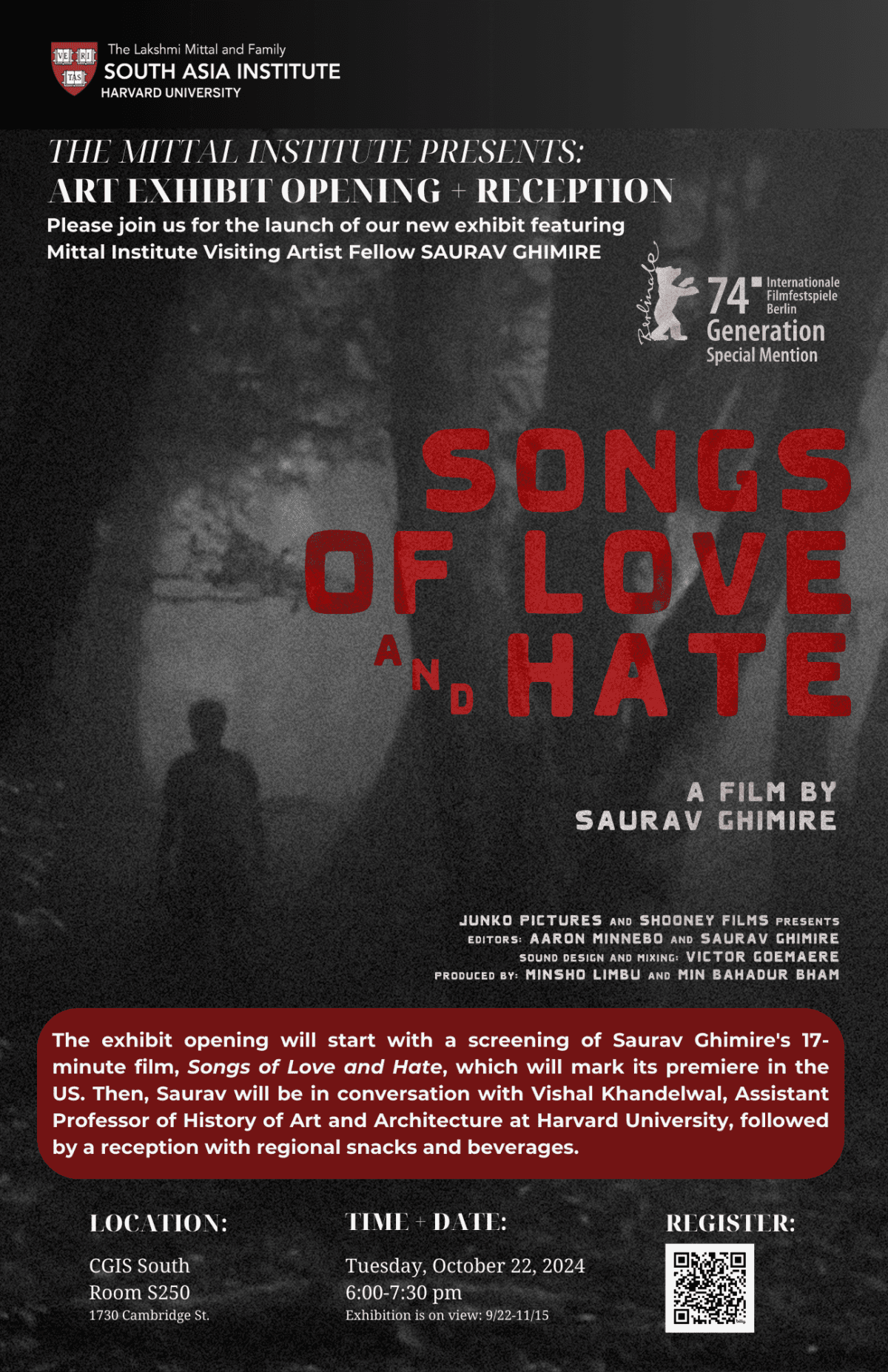
Please join us for the launch of our new exhibit featuring Mittal Institute Visiting Artist Fellow Saurav Ghimire, followed by a film screening of his film “Songs of Love and Hate.”
More Info